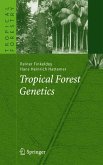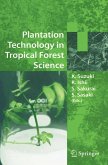Dieser Download kann aus rechtlichen Gründen nur mit Rechnungsadresse in A, B, BG, CY, CZ, D, DK, EW, E, FIN, F, GR, HR, H, IRL, I, LT, L, LR, M, NL, PL, P, R, S, SLO, SK ausgeliefert werden.
"This book is a compilation of more than 10 years of research on the ecology of the lowland dipterocarp forest of Lambir Hills National Park, Malaysia. ... Many chapters contain valuable data on dipterocarp forest ecology and phenology never published before. Additionally, the book contains an appendix on reproductive traits, floral characteristics, and pollinators of 270 plant species of Lambir Hills National Park, belonging to 73 families. The book is comprehensively written and is recommendable to anyone working in (paleo)tropical ecology, or pollination biology." (Niels Raes, Blumea, Vol. 51 (1), 2006)
"This book provides an overview of ... studies conducted in the Lambir Hills National Park in Malaysia. ... A notable feature of this edited volume is the comparative analysis of pollination systems in neotropical and paleotropical forests. ... Papers on pollination and phenology provide important insights to evolution and ecology of tropical rain forest trees and their pollen vectors. ... this volume considerably enriches our knowledge of not only pollination in the tropics, but also differences between the Old- and the New-World tropics." (Kamaljit S. Bawa, Ecology, Vol. 87 (7), 2006)
"This volume focuses on interactions between plants and animals. ... Many informative tables and carefully drawn figures ... colour photos and a glossary enrich this unique and useful book. ... I expect that this book will find many appreciative users ... . The authors can be congratulated for the immense variety of interesting details presented in this substantial work. The book is necessary for all scientists working in the field of Tropical Ecology, but it is also very useful for students." (Anselm Kratochwil, Phytocoenologia, Vol. 36 (3), 2006)









